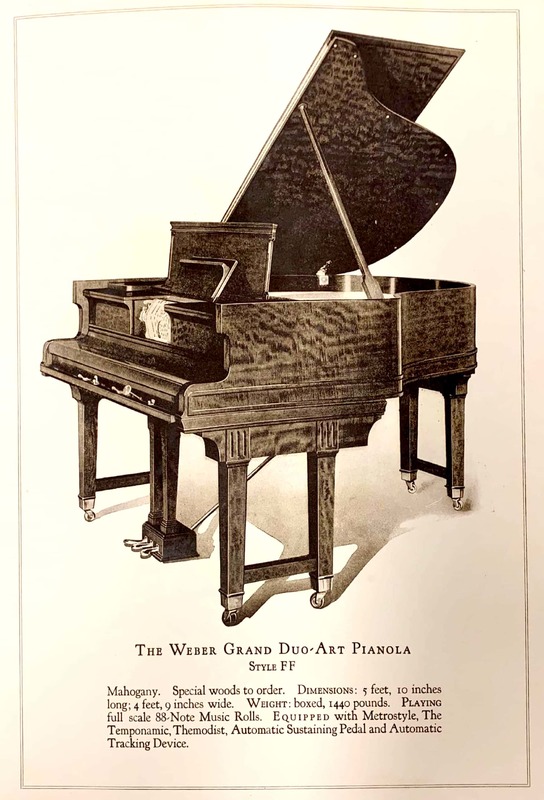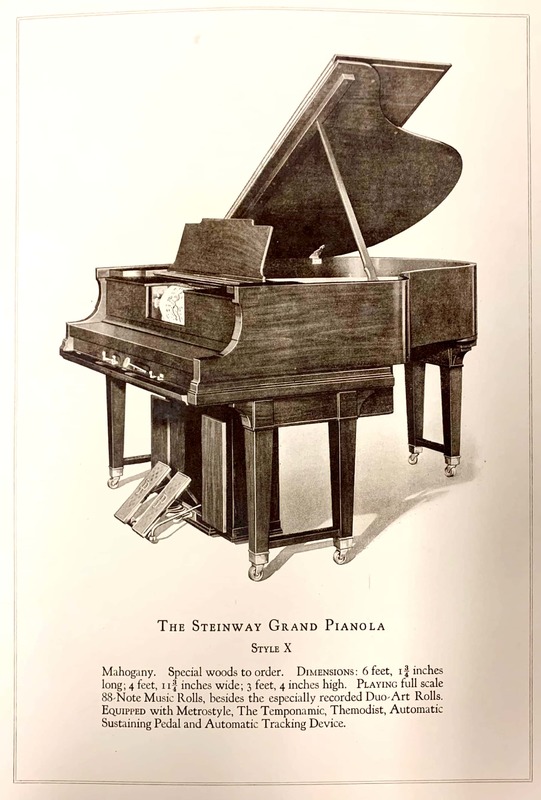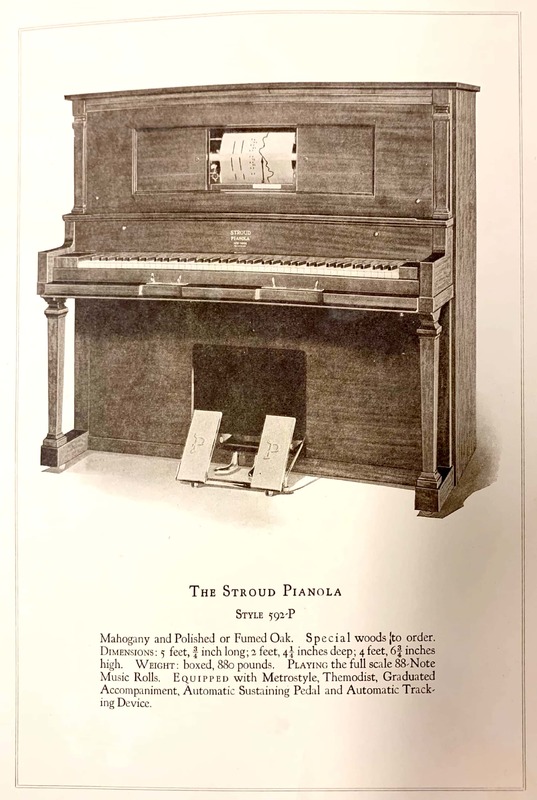Acquisition of a pianola
Thanks to cooperation with piano manufacturers such as Stroud, Steck, Weber, and Steinway, manufacturers endeavored to offer pianolas in different price ranges. The catalog below shows some examples. Different models were available, including grand and upright pianos in all colors and shapes. Many other companies produced similar instruments, including Hupfeld, Pleyel, and Wilcox & White.
Although the acquisition of a pianola was still reserved for the wealthy, many middle-class families in North America and Europe could afford a pianola by paying in installments or exchanging an existing piano for it. Many instruments were also exported to South America as well as some to Africa, Asia and Oceania. At meetings of the major production companies in 1908 and 1911, it was agreed to standardize music rolls with 88 notes so that rolls from different companies could be played on all instruments.
Below: Excerpts from the Aeolian Company catalog “The Weight of Evidence” with different pianola models (New York 1914). Photo: K. Paige
Citation: Stephanie Probst, ‘Playing like Paderewski, Chaminade and Co: Music education with the pianola and music rolls’, in: Materiality of Musical Instruments. A Virtual Exhibition.




